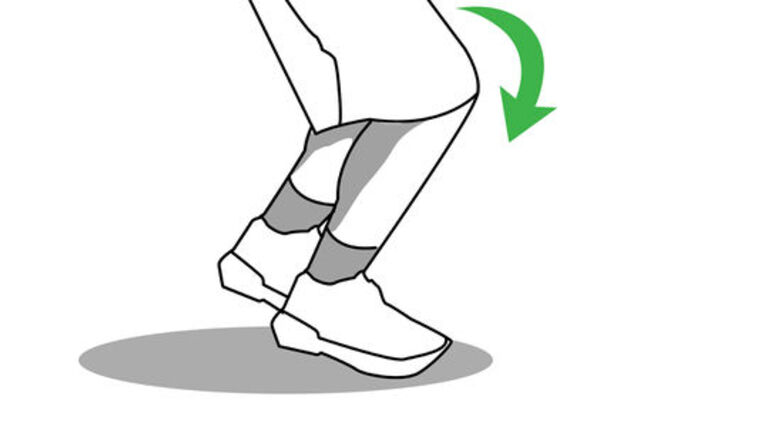
views
Having the Right Stance
Keep your feet no further than shoulder width apart, preferably closer together, and slightly staggered. You should put your shooting foot very slightly ahead of your non-shooting foot. Your shooting foot is the foot on the same side as your shooting arm – if you’re right handed, it will be your right foot. Your feet should be turned 10 to 45 degrees towards your off hand side, and your shoulder, hip, and elbow should be aligned with the basket.
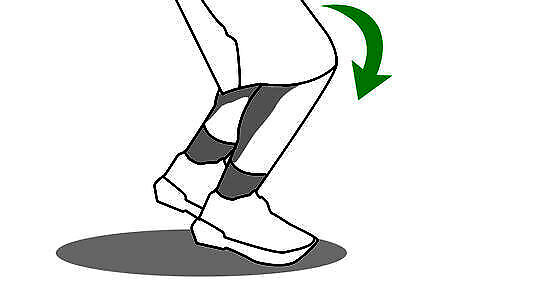
Flex your knees slightly. Locking your knees makes it easy for you to get knocked off balance. Flex your knees comfortably so you're in position to jump as soon as you have the ball. Keep your stance in mind as you learn the art of shooting and begin to practice. Once you find the stance that suits you best, use it every single time. The goal is to get so used to the stance that you don't have to think about it before your feet take the right position to let a great shot fly.

Turn more in the air and jump forward, keeping your shoulders back, if you need to shoot a longer shot. Your power mostly comes from your turn and your shoulders being relaxed. Your shot will be much less accurate and fluid if you try to fling the ball forward using power in your chest and arms. Practice jumping from 0 to 90 degrees without the ball to practice your turn. Make sure you are jumping forward and that your shoulders are back and relaxed.
Holding the Ball Correctly
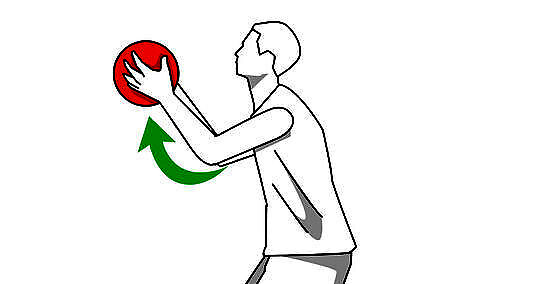
Dip the ball down to your waist or thigh. The ball and your shooting eye should form a straight line to the basket.
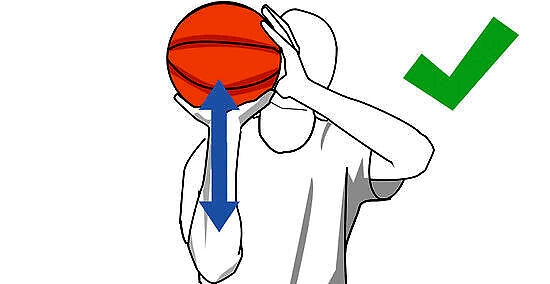
Position your elbow so it's inline with your shoulder, not directly under the ball. Learn to position the ball in this same place every single time you get ready to take a shot. When someone passes you the ball, dip it to your waist or thigh. If you catch a bounce pass or another low pass, or are shooting off the dribble, you don't need to dip, as you are already in a dipping motion. Also, if you are right-handed, keep your left hand on the side on the line and your right hand holding the back of the ball firmly in place. Use your hand that you write with to shoot with. Your other hand is just for the guide. If you are left-handed, do the opposite.
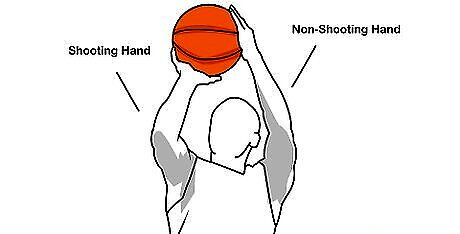
Grip the ball correctly. Position your shooting hand so that your fingertips are perpendicular to the seams in the ball. This hand is responsible for launching the ball. Place your non-shooting hand on the side of the ball to act as a guide for the shot. Your palm may or may not be touching the ball while you’re preparing to shoot - you may have control of the ball with your fingers and thumb. Leave a little space between your palm and the ball, so the ball will be able to roll off your fingertips with ease. The ball should sit on your finger pads. Spread your fingers wide so you have greater control over the ball.
Taking the Shot
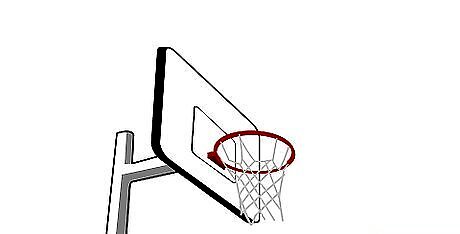
Locate the target. If you want the ball to go into the net, then you need to look at the net. If you’re planning to bank the ball in off the backboard, then look at the spot on the backboard you want to hit. Your eyes are an incredibly important part of a good shot in basketball. Once you release, you may either follow the flight of the ball (which is common among great NBA shooters) or continue to look at the rim.
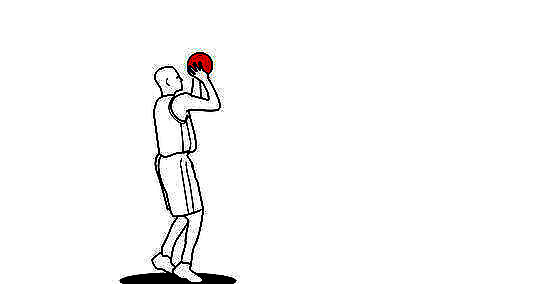
Straighten your knees and jump. Use your legs to help propel the ball by jumping upward while your shooting hand launches the ball and your shoulders lean back. Move your legs, torso, and arms together in a coordinated fashion to take the shot.

Jump slightly forward when you shoot, making sure your shoulders lean back and are relaxed. Your feet shouldn't land in the same position where they started because it will cause a lot of tension in your neck and shoulders. Jumping forward will also give your ball more arc. Don't lean forward as you jump. If your body is balanced, you should jump in a natural motion, it will cause your shot to be balanced and relieve tension.
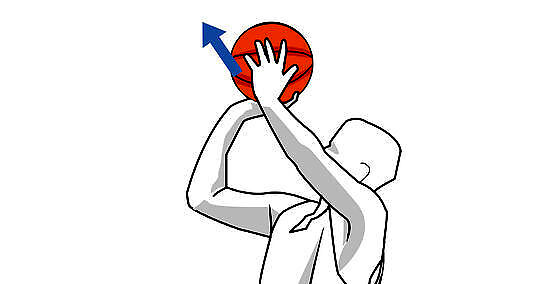
Push the ball upward with your shooting hand. As your hips rise up and you start your jumping motion, move the ball in a smooth motion from your dip to eye level. It should all be one smooth motion. Your hips rise as your elbow rises with the ball, and you should turn anywhere from 20-90 degrees towards your off hand. Don't let the ball go behind your head or off to the side. Shoot it in a fluid, forward motion. Your non-shooting hand serves only to guide the ball and to keep it steady while your shooting hand exerts force.
Release the ball. Just before you reach the height of your jump, release the ball, with your shooting hand aimed at the basket. Straighten your elbow and push your wrist so that the ball arches, rather than moving toward the basket in a straight line. As you release the ball, your guiding hand should move to lightly touch your shooting arm just below the wrist. Roll the ball off your fingertips toward the basket. You can tell whether you shot it properly by looking at the backspin; if the lines of the basketball spin symmetrically, you positioned the ball properly.

Follow through. This is a hugely important part of shooting a basketball. If you shoot from your wrist without following through the shot won’t be nearly as accurate. When the shot is complete, your shooting hand will resemble the shape of a swan; your arm is arched elegantly toward the basket, with your hand loosely cocked downward and your fingers pointed toward the hoop. This is called follow through.
Perfecting Your Technique

Develop muscle memory. Basketball is a fast-paced game, and you won't have time to think about the mechanics of shooting while the clock is running down and your opponents are trying to steal the ball from you. It's important to practice shooting as much as you can, so that taking a shot - from the stance and grip to the jump and release - feels natural. Practice from many angles. Shoot from all sides of the basket and from a variety of distances, using the same form every single time, whether you're shooting from the 3-point line or closer to the basket. However, you should turn more and jump farther forward for a longer shot than a shorter one. Stephen Curry Stephen Curry, Professional Basketball Player Work hard to develop your shooting skills. "Shooting the ball is a part of the game. Everybody can shoot in their own way. Not everybody can make. But everybody can shoot."

Practice free throws. Free throws, or foul shots, are taken from the free throw line, located 15 feet (4.6 m) from the basket. It's a good distance to practice from, and since it's located in front of the backboard behind the basket, the ball will usually bounce back to you and you won't have to chase after it as frequently.
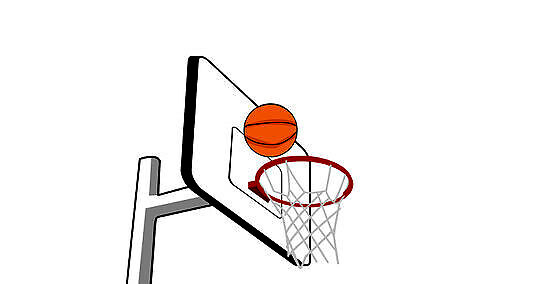
Start to use the backboard. The backboard can be a useful tool, especially for shots you take close to the basket. Depending on where you are on the court you’ll need to bank the ball off the backboard in different ways. Generally, if you are on the right side of the court you’ll aim for the top right corner of the square on the backboard. If you are on the left side of the court you’ll aim for the top left corner of the square. Use the backboard when you shoot layups, which are taken off the dribble rather than from a standing position.
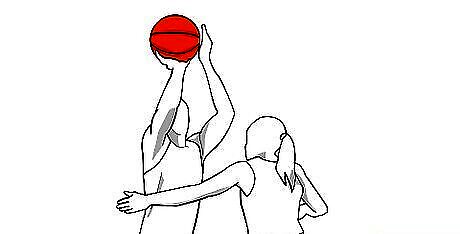
Practice in a game setting. After you're comfortable shooting on your own, get some friends together to have a basketball scrimmage, or join a league so you can play some games. Shooting during the pressure of a game is a little harder than doing it by yourself in your backyard, since you have to catch passes, dodge steals and be aware of the strategy your coach and the other players expect you to employ. However, if you practice the right form and develop good muscle memory, you'll be racking up the points in no time.

















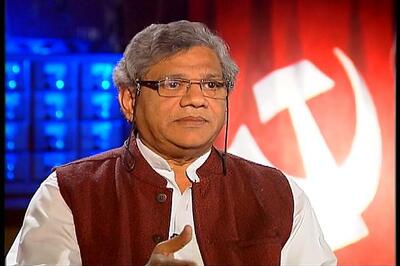


Comments
0 comment